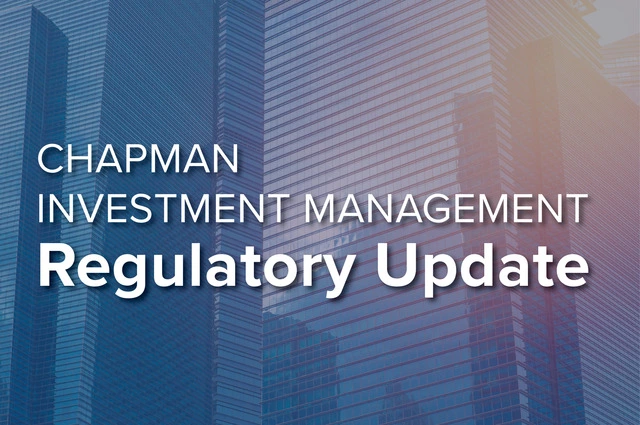- Topic: OCC
24 matches.
On March 7, 2025, the Office of the Comptroller of the Currency (“OCC”) issued Interpretive Letter 1183, which confirms that national banks may engage in certain crypto-assets activities and reverses the previous requirement that they first obtain a supervisory non-objection letter before engaging in such activities.
A recent federal district court decision out of Massachusetts found that a bank was the true lender on a loan subsequently transferred to a trust consisting of student loans. Robinson and Spears v. Nat’l. Collegiate Student Loan Trust 2006-2, 2021 WL 1293707, Case No. 20-cv-10203 ADB (D. Mass. April 7, 2021).
In 2015, the Second Circuit Court of Appeals issued an opinion finding that, under the doctrine of federal preemption, a non-bank assignee of a bank loan could not charge and collect the rates and fees that the bank could charge and was therefore subject to state law usury limits.
- The Banking Law Journal
The Office of the Comptroller of the Currency recently issued its final rule codifying as a regulation that the interest charged on loans that is permissible before the loan is transferred remains in effect after the loan is transferred.
The Office of the Comptroller of the Currency and the Federal Deposit Insurance Corporation have been quite active in issuing or proposing new regulations and initiatives focused on financial technology and innovation in financial services.
On June 11, the Online Lending Policy Institute hosted a conversation covering the expansive advance notice of proposed rulemaking in the fintech space.
On May 29, the Office of the Comptroller of the Currency issued its final rule codifying as a regulation that the interest charged on loans that is permissible before the loan is transferred remains in effect after the loan is transferred.
On May 5, federal banking regulators adopted an interim final rule that neutralizes the liquidity coverage ratio impact for banks participating in the Federal Reserve’s Money Market Mutual Fund Liquidity Facility and the Paycheck Protection Program Liquidity Facility.
- The Banking Law Journal
This article outlines the features of proposals to adjust the applicability of certain capital and liquidity tests and certain enhanced prudential standards for bank holding companies.
On August 22, the three federal banking agencies issued an interim final rule implementing the May 2018 banking law’s requirement that investment grade, liquid and readily marketable municipal obligations be treated as Level 2B “high quality liquid assets” under the liquidity coverage ratio rule.
On April 19, the House Financial Services Committee posted a “discussion draft” of a revised version of the CHOICE Act. The discussion draft contains most of the provisions in last year’s bill with a number of important changes.
The Supplemental Examination Procedures for Risk Management of Third-Party Relationships issued by the Office of the Comptroller of the Currency on January 24 establish detailed compliance obligations for relationships with third-party service providers.
- Legal, Operations, and Strategy Briefs for Financial Institutions
In this edition:
- Mortgage Servicing Foreclosure Practices
- OCC Semiannual Risk Perspective
- February/March 2017Pratt's Journal of Bankruptcy Law
With Republicans retaining control of both chambers of Congress and Donald Trump elected President, the prospects for financial regulatory reform have changed. Many observers point to the Financial CHOICE Act as the best indication of Republican Congressional aspirations for such reform.
- November/December 2016Illinois Banker
Considering the flurry of activity in the fintech arena, is there a place for banks and, if so, what role can banks play? Given that marketplace lending is the most developed form of fintech today, it can be analyzed to see how banks do play important roles and employ different strategies dealing with this emerging market segment.
- Legal, Operations, and Strategy Briefs for Financial Institutions
On Friday, Comptroller of the Currency Thomas Curry announced that the Office of the Comptroller of the Currency will issue limited-purpose bank charters to qualified fintech companies.
- Legal, Operations, and Strategy Briefs for Financial Institutions
In this edition:
- Deposit Insurance Determination Rule
- FFIEC Revises Its Consumer Compliance Rating System
- Servicemembers
- June 2016AIRA Journal
This article discussed leveraged lending guidelines, unitranche facilities and the risks associated with unitranche facilities, including with respect to “agreements among lenders” as illustrated by the recent case of In re Radio Shack Corporation.
- Legal, Operations, and Strategy Briefs for Financial Institutions
In this edition:
- Recent Action by the OCC of Special Concern for Directors, Senior Managers, and Compliance Officers
- FDIC Provides Additional Guidance on Corporate Governance
- Legal, Operations, and Strategy Briefs for Financial Institutions
In this edition:
- Use of Property Evaluations
- A Bank Customer’s Guide to Cybersecurity
- Certain Prepaid Cardholders Treated as Customers for CIP Requirements
- January 2016 (Originally Published August 11, 2015)Client Alert
The Banking Law Journal republished a Chapman Client Alert.
In this edition:
- Student Loan Servicing—Unfair or Deceptive Acts or Practices
- OCC Revises Its Truth in Lending Handbook
- FFIEC Releases Revised BSA/AML Examination Manual
- NACHA Same-Day ACH Processing Proposal
In September 2014, the U.S. banking agencies adopted final rules implementing a liquidity coverage ratio requirement that will test a bank's ability to withstand "liquidity stress periods." In collaboration with the Structured Finance Industry Group (SFIG), Chapman attorneys authored a guide summarizing elements of the final rule that have the greatest impact on the securitization market.
On September 3, 2014, the US banking agencies adopted final rules implementing a liquidity coverage ratio (LCR) requirement that will test a bank's ability to withstand liquidity stress periods. The specific objective of the LCR rules is to ensure that a bank has enough high quality liquid assets (referred to as HQLA) that can be immediately converted into cash to meet its liquidity needs for a 30-day stress period.









